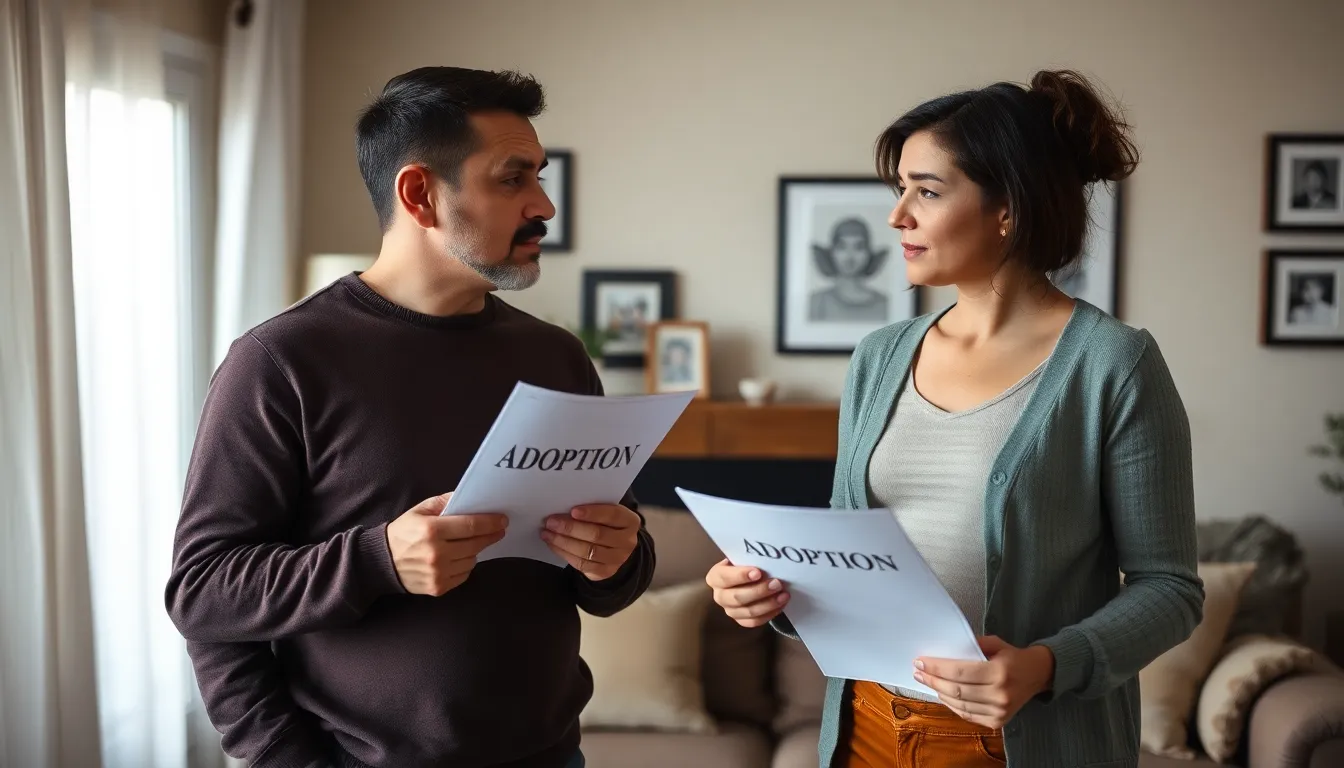The story of Natalia Grace has captivated audiences and sparked intense debate. At the center of this controversy lies a question that challenges perceptions of childhood and identity: was Natalia Grace actually a child? Adopted by a couple who later claimed she was an adult posing as a child, this case raises unsettling questions about trust, deception, and the complexities of human relationships.
As the narrative unfolds, it reveals a tangled web of legal battles and emotional turmoil. The conflicting accounts of Natalia’s age and intentions have led many to scrutinize the very definition of childhood. This article delves into the details of Natalia’s story, examining the evidence and opinions surrounding her true identity, ultimately seeking to uncover the truth behind this perplexing case.
Table of Contents
ToggleBackground on Natalia Grace
Natalia Grace, originally from Ukraine, was adopted in 2010 by Kristine and Michael Barnett. The adoption raised suspicions due to Natalia’s unusual development and physical appearance. Upon her arrival in the United States, the Barnetts observed behaviors that led them to question her age.
In 2012, the Barnetts claimed that medical evaluations suggested Natalia was not the child she presented herself to be. They asserted that she might have been an adult with a skeletal condition mimicking a child’s age. This allegation sparked a complex legal battle, resulting in various accusations between the Barnetts and Natalia.
Natalia’s case gained notoriety, prompting investigations by law enforcement and social services. The Barnetts eventually faced charges of neglect, as they moved to reestablish their lives after their claims about Natalia’s true age. Public interest surged as the narrative evolved, revealing deeper issues within the adoption process and the challenges faced by families.
The debates surrounding Natalia’s true identity continue to shape the discourse on adoption, childhood, and the complexities of trust. The case remains unresolved, leaving many questions about her actual age and circumstances.
The Story Unfolds

The case of Natalia Grace reveals complexities around her early life, adoption, and the ensuing controversies. Each development challenges perceptions of identity and truth.
Early Life and Adoption
Natalia Grace was born in Ukraine and diagnosed with a form of dwarfism known as spondyloepiphyseal dysplasia. In 2010, Kristine and Michael Barnett adopted her, believing she was a six-year-old child. However, soon after the adoption, they noted atypical behaviors and physical traits that raised suspicions about her actual age. Reports stated Natalia exhibited advanced verbal skills, adult-like mannerisms, and varying degrees of emotional maturity, leading the Barnetts to question her identity. Medical evaluations in 2012 suggested she might be much older than stated, igniting discussions about the necessity for more rigorous age verification in international adoptions.
Controversies and Claims
The Barnetts’ claims sparked a wave of controversies that attracted public attention and divided opinions. They alleged Natalia manipulated family dynamics and displayed behaviors inconsistent with that of a minor, concluding she was an adult posing as a child. Natalia, on the other hand, contended she had been abandoned and abused. Legal battles ensued, with the Barnetts facing neglect charges for leaving Natalia in an apartment while they moved to another state. The situation exemplifies broader issues in adoption practices, such as assessing age, identifying potential red flags, and ensuring child safety. As investigations by law enforcement continued, various testimonies deepened the divide, underscoring the case’s complexities and its impact on public discourse.
Evidence Presented
Multiple sources of evidence contribute to the ongoing debate about Natalia Grace’s true identity. Medical evaluations and testimonies from family and experts play crucial roles in shaping the narrative surrounding her case.
Medical Evaluations
Medical evaluations conducted around 2012 suggested that Natalia Grace may not have been a child. Experts examined her skeletal structure and noted signs of advanced development associated with older individuals. A pediatric endocrinologist discussed the unusual characteristics of her bones, indicating a possible age discrepancy in her official documentation. Furthermore, comparisons of her size and developmental milestones with typical growth patterns in children raised additional questions. These evaluations fueled the Barnetts’ assertion that Natalia was an adult, complicating the understanding of her age further.
Testimonies from Family and Experts
Testimonies from family members and experts have provided diverse perspectives on Natalia’s situation. Kristine and Michael Barnett reported observing behaviors inconsistent with a child’s typical conduct, claiming Natalia displayed manipulative tendencies and advanced communicative skills. They insisted her actions resembled those of an adult rather than that of a young girl. On the other hand, Natalia’s advocates highlighted her challenging upbringing and medical diagnosis, proposing that her behavior stemmed from trauma and not adult origins. Experts in child psychology emphasized the importance of considering her environmental and developmental context, noting that her physical condition might mask her true age, further complicating the discussions surrounding her identity.
Public Reaction
The public response to Natalia Grace’s case has been intense, with media coverage and social media discussions shaping perceptions and debates.
Media Coverage
Media outlets extensively reported on the Barnetts’ claims and the ensuing legal battles. Major news platforms produced investigative reports, revealing the complexities of the case and highlighting conflicting narratives. Articles documented the Barnetts’ accusations against Natalia, while others focused on her supporters who emphasized her traumatic background. Documentaries and interviews with experts provided in-depth analysis, which further fueled public fascination and raised questions about adoption, identity, and ethics. Viewership and engagement metrics indicated that the story captivated a broad audience, prompting discussions about child welfare and legal accountability.
Social Media Impact
Social media platforms played a pivotal role in shaping public opinion on Natalia Grace’s case. Users engaged in heated debates, sharing personal perspectives and drawing attention to relevant studies on childhood development and trauma. Hashtags related to the case trended during significant developments, amplifying awareness and encouraging dialogue. Additionally, influencers and advocates for children’s rights highlighted the complexity of the situation, promoting discussions about the adoption process, age verification challenges, and the treatment of vulnerable individuals. This online discourse contributed to a wider understanding of the case’s implications while drawing attention to systemic issues within foster care and adoption practices.
The Legal Battle
The legal battle surrounding Natalia Grace has raised critical questions about identity, age verification, and child protection in adoption. Multiple court cases have unfolded, marked by opposing claims and interpretations of the facts.
Court Cases
Numerous court cases have emerged from the Barnetts’ claims that Natalia was an adult. In 2014, the Barnetts filed to change Natalia’s birth year, asserting she was actually born in 1989, thus positioning her as an adult at the time of adoption. Natalia contested this, leading to a fight over her legal status. In 2019, the Barnetts faced felony neglect charges for abandoning Natalia, who, during their legal battle, claimed to be a minor. This ongoing litigation has drawn inquiries into the credibility of medical and psychological evaluations, with expert testimonies weighing heavily on both sides.
Outcomes and Implications
Court rulings have yet to provide a final resolution regarding Natalia’s age and legal standing. The implications of these judgments extend beyond individual parties, impacting adoption laws and practices. Legal experts suggest stricter regulations and better screening processes may be necessary to avoid similar disputes in the future. The case has prompted discussions on the ethics of adoption, particularly the necessity for accurate age assessments and protective measures for vulnerable children, fostering a deeper examination of systemic flaws within the adoption system.
The case of Natalia Grace continues to ignite debate and scrutiny surrounding adoption practices and the complexities of identity. With conflicting narratives and ongoing legal battles the truth remains elusive. As more evidence emerges the implications for adoption laws and child protection policies become increasingly significant.
This situation highlights the urgent need for improved age verification processes and a deeper understanding of the challenges faced by adoptive families. The public’s fascination with Natalia’s story reflects broader societal concerns about trust and safety in the adoption system. As the legal proceedings unfold the case serves as a critical reminder of the importance of safeguarding vulnerable children in all circumstances.


